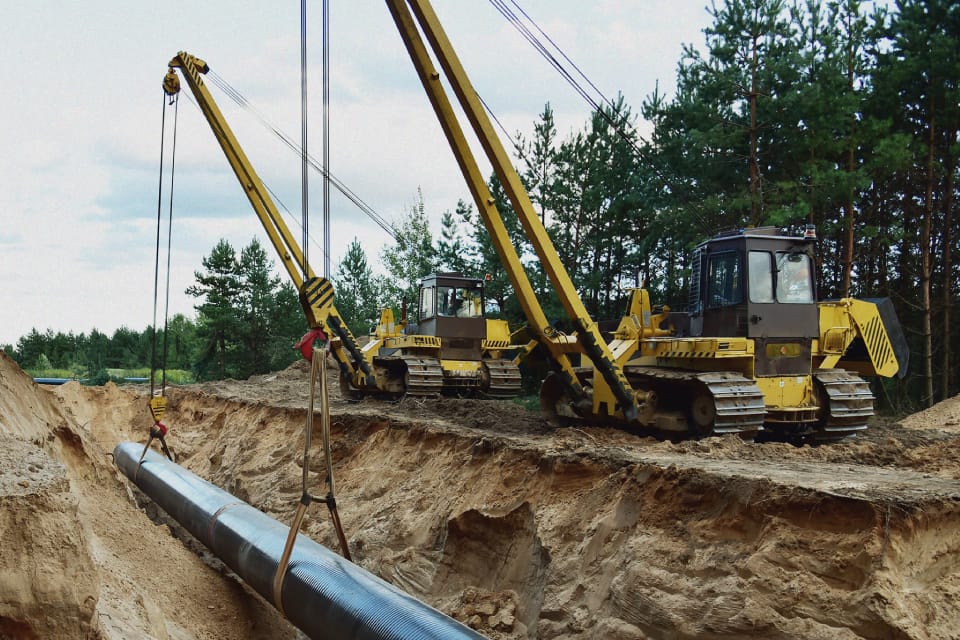
Holiday Bonus Episode: Safety Tips You Need This Season | Risk Matrix Episode 122
THE RISK MATRIX Cutting-edge podcast on occupational safety and risk management. Hosted by industry titans: JAMES JUNKIN, MS, CSP, MSP,…

Pipelines are necessary for rapidly and efficiently transporting gases, fluids, and other substances, making them essential to infrastructures worldwide. However, operators face various risks during pipeline construction, from rugged terrain to extreme and dangerous pressures. To ensure job site and community safety, they must train workers in best practices to perform Operator Qualification tasks related to pipeline installation and joining.
This article discusses ten such best practices for safeguarding workers and the surrounding population during pipeline construction.
Comprehensive planning and assessment are essential for setting up rights of way, and companies can find the most suitable route by analyzing potential paths and assessing critical factors such as the potential negative impacts on:
These evaluations offer significant data that aids in making well-informed decisions and possible adjustments to reduce adverse effects and improve sustainability.
Pipeline construction delays, fines, and even shutdowns occur because of poor communication, which can come in many forms, including but not limited to the following:
Not meeting permit conditions due to poor communication is inexcusable to governing authorities, and the consequences of noncompliance may include fines, a work stoppage, and other legal repercussions.
As such, hiring clients must develop a comprehensive communications plan executed across all project levels that includes the following:
Providing field personnel with a method to identify and report potential issues to inspectors and managers can save time and expedite risk management efforts.
Safeguarding against human error requires comprehensive and ongoing safety training for new and existing personnel.
For newly hired workers, routine training sessions during Operator Qualification help them recognize hazards and understand the necessary safety protocols from day one on the job site.
For the more experienced workers who understand the safety protocols and perform their duties safely, refresher courses can help avoid complacency and a false sense of security. Situations and their inherent risks can change over time, and when accidents rarely occur, tenured workers might lose focus and not identify newly developing risks on the site.
Moreover, consistent safety training allows companies to explore innovation and enhance safety protocols. As safety technology and risk management solutions advance, existing safety guidelines and Operator Qualification standards may become outdated.
Most municipalities have ordinances specifying work hours for pipeline construction, and contractors might feel compelled to exceed those timeframes when under pressure to meet deadlines. Such actions can result in complaints from surrounding residences, particularly in areas of heightened public scrutiny. Repeated infractions may result in a temporary closure or the revocation of local permits.
Site supervisors should understand and adhere to all local regulations and schedule constraints and consistently verify the actual hours of operation in daily work logs.
Companies must provide workers with the proper personal protective equipment (PPE), especially throughout the excavation and construction. Although often regarded as the last line of defense during an incident, PPE can significantly mitigate injuries and fatalities.
PPE guidelines require workers to wear certain items, which include but are not limited to the following:
However, the specific guidelines change in different situations. When someone is operating heavy machinery nearby, for example, they can lose situational awareness and may not see workers who blend in with their surroundings. In that case, donning high-visibility apparel in bright colors might be a higher priority than wearing other gear.
Conversely, welding workers should wear a shield mask to protect their faces and eyes from sparks and bright lights.
Regarding heavy machinery safety, Operator Qualification must include training on the correct procedures for using worksite equipment. This curriculum should include the operation of vehicles, excavators, and forklifts. By established guidelines and principles, each worker should be aware of potential dangers and exercise caution toward one another while operating on and near the pipeline construction site.
As mentioned earlier, fostering the sustainability of pipeline construction projects by minimizing environmental and social impacts is crucial, and implementing comprehensive environmental management strategies can help mitigate ecological disruptions by:
Hiring clients might even consider engaging local towns and addressing their concerns to build community goodwill and avoid protests and demonstrations that might affect project execution.
Safety considerations during construction should include proper handling tools and pipelines. As such, companies should ensure that workers use equipment under the manufacturer’s guidelines to prevent dangerous handling.
Also, before starting any undertaking, safety teams should conduct a hazard analysis to apprise all personnel of any potential dangers encountered on-site while performing their specific duties.
Pipeline construction services deal with tremendous internal pressures and ensuring that pipelines stay within their maximum operating procedure is a critical safety measure.
If, during testing, a worker discovers that the pressure in a pipeline is excessively high, the pipeline’s integrity is likely compromised. The team should undertake measures to rectify the issue immediately, as ignoring integrity concerns could result in unforeseen but avoidable repercussions.
It is imperative to conduct routine tool inspections of equipment throughout the workday and at project completion. Most equipment undergoes considerable tension and pressure, which inevitably results in significant deterioration.
As a result, safety teams should inspect machinery and equipment for indications of the following:
Maintaining the use of tools that are damaged or degraded on the job site will only heighten the probability of accidents or injuries.
Companies can ensure the safety and security of operators and the surrounding community by implementing pipeline construction safety measures grounded in sound legal, business, and ethical principles.
However, more than following the abovementioned steps is needed. Hiring clients must also integrate Operator Qualification compliance software that manages regulatory requirements and worker qualifications.
Consider partnering with us to configure an OQ solution that prepares your workers for pipeline construction and operation.
Contact us today to learn more.


THE RISK MATRIX Cutting-edge podcast on occupational safety and risk management. Hosted by industry titans: JAMES JUNKIN, MS, CSP, MSP,…

THE RISK MATRIX Cutting-edge podcast on occupational safety and risk management. Hosted by industry titans: JAMES JUNKIN, MS, CSP, MSP,…
We’ll send you practical and insightful supply chain risk management info that can benefit your business. Plus, important company updates that keep you in the loop.
